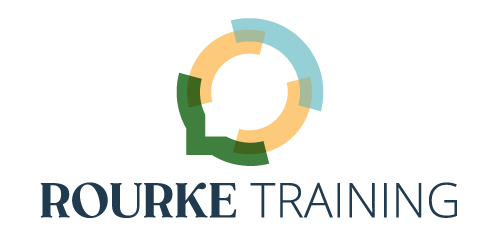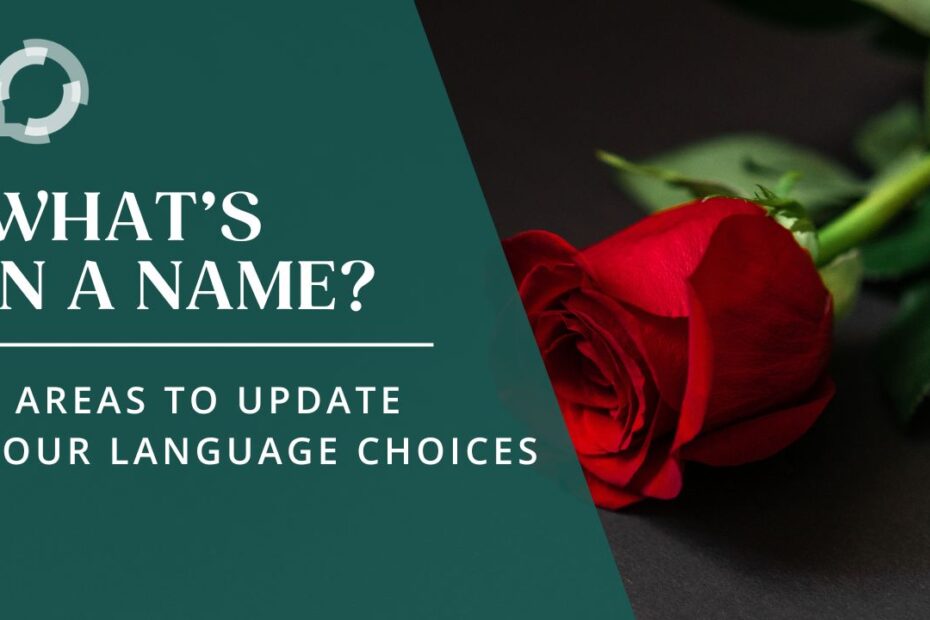“What’s in a name? That which we call
A rose by any other word would smell as sweet”
(Romeo and Juliet, Act II, scene 2, lines 46-47)
Juliet’s musing on love and family honor on her balcony get to the heart of how language shapes meaning. Whatever the thing itself is, language is how we understand it in the world. Because language shapes perception, that the words you use influence how you think about the topic you’re discussing. This is the reason why it’s so important to pay attention to your language, to the words that spring to mind and lips easily. Language habits are just as formative as other daily routines.
Language is also always evolving. Phrases and names that were once standard have now fallen out of favor or are outright rejected. Often such once-standard names are the result of colonization and appropriation. Language evolution can be due to new information and to shifts in cultural values and emphasis. The key is respect for the groups to whom the name applies.
Regardless of why a name is changed, ongoing mastery for speakers and trainers includes keeping up with updated terminology and practicing new terms in order to integrate them into everyday language patterns. As Oprah Winfrey recalls in this video, Maya Angelou said of Winfrey’s earlier mistakes in life, “You did in your 20s what you knew how to do. And when you knew better, you did better” (full quote at 2:27).
We can all do better.
U.S. Federal Place Names
Perhaps one of the most visible language evolutions affects familiar place names. Long-established names that erase or denigrate Indigenous and minority populations are being replaced with more appropriate and respectful terms, in consultation with the affected groups.
I’ve previously written about renaming the living history museum in Plymouth, MA to better reflect the lives of both communities – the Wampanoag People and European colonists – who lived there in the 17th century.
Other such renaming efforts are underway around the United States, particularly at the Federal level, regarding sites and buildings with racist and derogatory names. The U.S. Board on Geographic Names is the government department charged with “maintain[ing] uniform geographic names use throughout the Federal Government.”
In particular, as of Sept 2022, the BGN has voted to replace the many Federal place names containing “Sq_ _ _,” a derogatory word for Indigenous women. Secretary of the Interior Deb Haaland is the first Native American person to serve as a cabinet secretary; she is of the Pueblo of Laguna. As Secretary Haaland said when announcing the final vote on “sq_ _ _”, “I feel a deep obligation to use my platform to ensure that our public lands and waters are accessible and welcoming. That starts with removing racist and derogatory names that have graced federal locations for far too long. . . . Together, we are showing why representation matters and charting a path for an inclusive America.”
Insect Names
The Entomological Society of America (ESA) maintains a database of common names for insects. These are the terms most people use to refer to species, as few of us can casually roll formal Latin genus and species names off of our tongues.
In 2021, the ESA updated their naming protocols and launched the Better Common Names Project to prevent new names containing derogatory terms and to rename established terms, with a focus on “bar[ring] names referencing ethnic or racial groups and names that might stoke fear; [and] discourag[ing] geographic references, particularly for invasive species.”
“Spongy moth” used to be known by a derogatory name for Romani people. In February and March 2024, the ESA solicited public comment for changing the names of 8 insects with “Japanese,” “Asian/Asiatic,” or “Oriental” in their common names, and a 9th with “African.” In an FAQ, the ESA noted that these 9 common names are in wide use, including U.S. Federal regulatory documents. The FAQ notes that these 9 are just the beginning of the effort to update this overall category.
Person-centered Language
If you listen to National Public Radio fairly regularly, you might have heard reporters and hosts use some unfamiliar terms when discussing various groups of people. Most folks are used to identity-centered ways of referring to others, putting the identity term before the noun: suburban commuter or college student, for example.
In contrast, person-centered language puts an individual first and refers to their conditions or experiences as just one attribute of the whole person.
One example is using the phrase “person who is unhoused” instead of “homeless person.” The latter stigmatizes the individual and implies that homelessness is inherent to who they are, whereas the former reframes their living conditions as their current – and therefore changeable – circumstances. Similar person-centered phrases for people who are pregnant, who have mental health conditions, and who are or who have been incarcerated.
Incorporating person-centered language is part of NPR’s effort to be more inclusive across every aspect of its operations, both on and off the air. They’re also at the heart of an editor’s high profile essay and subsequent resignation over what he sees as “the absence of viewpoint diversity” at the network (Read NPR’s response here). Whether NPR has enough centrist and conservative views in the newsroom and on air isn’t my focus in this piece, however.
My focus is on the need to pay attention to how language shapes our understanding of the world. Person-centered language is about respect as much as it is about accuracy. Individuals are the sum of their conditions and experiences; they are not defined by any one of them. A recent study by Caroline Murray and Natalie Jomini Stroud at the Center for Media Engagement, University of Texas at Austin finds that people in misrepresenting or stigmatized groups trust news reports that use person-centered language more than ones that don’t.
Equally important to note, however, is that some communities prefer identity-centered phrasing and that individuals within any given community will connect with one approach or the other, regardless of what the general community uses for itself.
If person-centered language is a new concept for you, your best approach is to be curious: listen to how communities talk about themselves, ask questions, and actively incorporate changes into your speech patterns.
How About You?
Have you noticed changes in language to be more inclusive and respectful? Where are you seeing them? Are such changes part of your daily environment or do you come across them randomly? Certainly sports is an area of American culture that has received a great deal of attention on this topic in connection with team names. Perhaps one of the most notable examples is the years-long effort to change the name and logo of the professional football team in Washington, D.C. from a racist slur for Indigenous people to the Washington Commanders.
What activities are you engaging in to keep your language respectful? Have you found that your audiences respond differently to person-centered or identity-centered language?
Tell us about it in the comments.
Check Out Our YouTube Channel
The Rourke Training – Ongoing Mastery YouTube channel has a bit of something for everyone. Go there to get Kirsten’s take on examples of public speaking, as well as reflections on her entrepreneurial journey. The channel is also the home of the podcast Kirsten and Kellie produced for 5 years, Ongoing Mastery: Presenting & Speaking, which covers everything connected to continually improving your craft of being a public speaker, from interviews and mini-coaching sessions with guests to conversations between Kirsten and Kellie.
Come join us.
Cheers,
Kellie


